Steph W. from SEOPressor


...help you check your website and tell you exactly how to rank higher?


87
score %
SEO Score

Found us from search engine?
We rank high, you can too.
SEOPressor helps you to optimize your on-page SEO for higher & improved search ranking.
By winniewong on February 21, 2018
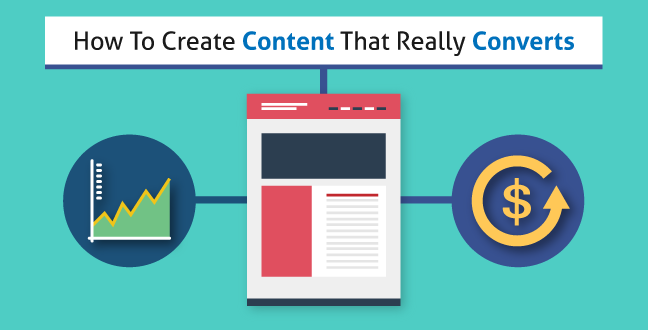
“Content” is a catch-all term when it comes to internet marketing, covering anything that isn’t explicit advertising.
I use the word explicit deliberately. Content is, of course, designed to advertise a brand, but in a more subtle and accessible way. Indeed, this form of advertising is known to some as passive marketing, as opposed to active marketing, such as traditional advertising.
I prefer a different definition. Traditional advertising, whether it be commercials, pop-up ads or sponsored links, interrupts what you’re doing, demands your attention, and gets in the way. In that way, this can be thought of as intrusive marketing. As a business, you are going to the consumer. And they hate it.
By contrast, content marketing allows people to find it when looking for answers to their problems online. For that reason, we can think of content marketing as a form of organic marketing. The consumer comes to you.
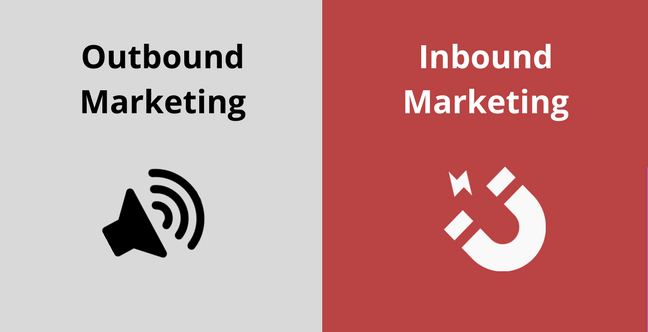
Are you pushing messages to your target audience or attracting them?
The primary way this work is through the other intention of content marketing: content marketing is designed to help. Whether that’s through advice, recommendations, reviews, how to’s, expert knowledge or more eclectic ideas such as panel discussions. The list goes on and on. But every piece of content used for content marketing is designed to solve a problem.
When people look for the solution, they find the content marketing, which introduces them to the business, and when done well, encourages them to buy from that company.
The first two parts are easy – awareness will happen naturally as a result of assistance. But conversion is a different animal altogether, and requires a careful balancing act.
After all, give too much away and there is no need to buy. Explain too little and you only frustrate your reader. Be too promotional and they feel tricked into reading an ad, and will punish you for it.
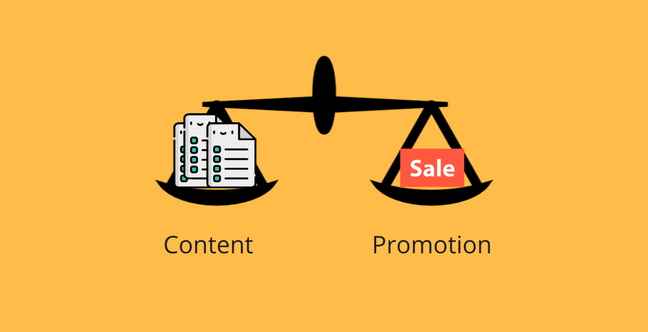
Strike balance between the amount of content to be shared and avoid being overly promotional. It’s difficult but you can do it.
You need to strike the balance, and that means any promotional aspect to the content must be storified and subconscious. Fortunately, that’s exactly what we’re going to talk about today.
Here are my five golden rules to creating content that really converts.

We spend our lives trying to avoid pain. It’s the reason consumerism has taken over the globe. We see products as solutions to our problems, and ultimately, all our problems give us pain. It’s why we refer to consumer challenges as ‘pain points’.
You might think that pain isn’t something you should be inflicting if you want to sell products, and you’re right. Narrowly, but right. You shouldn’t be vindictive, or upsetting, or controversial in an attempt to hurt people. That will always fail.
But empathy, empathy is the foundation of sales. And by telling the story of pain, by evoking it instead of inflicting it, you can create a sense of kinship with your reader.
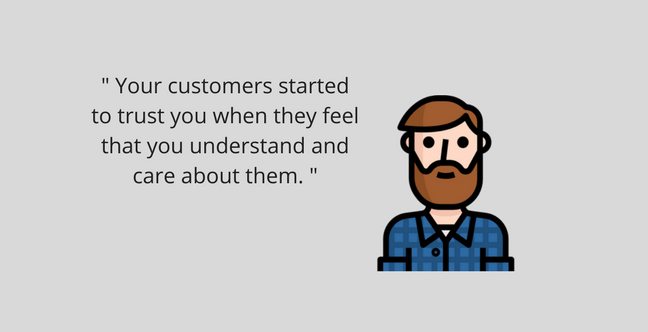
Let them know you care about them.
Pain is real, and it is human. No machine feels pain. Anything that makes your content look written by a real, genuine human is good. So what pain does your product or service alleviate? That’s where you start. That’s your strategy. Evoke that pain. Tell the story of that pain.
When people see that you understand personally, viscerally, what that pain, frustration, torment or insecurity feels like? They will start to trust you. And once you start to develop trust, you can start to convert sales.

Always keep your eyes on the market changes
In order for people to trust you they have to respect you, and to respect you, they need to feel like you’re an industry leader. Thought leadership is an increasingly common trend, and that’s all about getting out in front of competitors and defining a compelling, hopeful vision for the future of the business you’re in.
So, if you want to be both trusted and respected, and you’ll need to be if people are going to buy, then you need to be on top of your competitors at all times. You need your finger on the pulse of your industry and you need to be current. Watch out the market changes.
#AmazonGo opens on Monday, January 22 in Seattle. Get the app to enter the store. See you soon! https://t.co/jt7quQ4rke pic.twitter.com/shIyrifZyk
— Amazon.com (@amazon) January 21, 2018
That isn’t just about branch opening, share prices or product releases either. You need to be attuned to their communication. It’s a sad fact that every writer feels they can see the problems in another’s work, but for you that can be a blessing and a guide. Seeing what they’re doing, whether it’s good or bad, can give you something to emulate or something to develop. You can do what they do, or differentiate yourself depending on how successful it is.
I’m talking about their offer. I’m talking about their framing. Their call to action. Their landing page design. Their pitch. The way the content flows. It’s all there to be understood, you just have to analyse it, and with enough regularity that you don’t fall behind. This is a rapidly evolving discipline.
Follow the trends quickly and aggressively until you’re caught up on them, then take the understanding that’s given you and forge ahead. Lead the field. Consumers will follow the leader.
This is everything, really. Anything that’s ever been successful did so because it told a story people wanted to hear. Every successful brand tells a good story, so make yours one of them.
4 Key elements to build a thoughtful, unique and emotional brand story:
Storytelling allows you to make your promotion indirect, and subconscious. It allows people to create a distance that allows them to invest more readily. Do you remember what I said about pain, and how our lives are spent avoiding it? That’s why we don’t want direct advertising, but seeing someone else struggle is the basis of every movie or TV show we’ve ever watched.
https://www.youtube.com/watch?v=Ekcq7If604g
The Greeks invented theatre as a way to separate people from their emotions, so they could watch their pain simulated at a safe distance, and experience the release, or catharsis, that comes from their suffering ending. This “feeling box” has evolved, but it’s most concisely captured in Inception. He talks about how positive motivation is the most powerful way to implant an idea. Reconciliation with an estranged parent is a powerful motivator.
Of course, your motivator may not be THAT powerful, but you’re not in a conceptual sci fi blockbuster either – you’re trying to sell a product.
So put a cipher for your audience at the centre of the story – this can be a previous client, an apocryphal person, or the writer themselves. Explain how they feel, what they want, what they struggle with, and how the product came along and lifted that curse, provided the release from pain, the catharsis. Build up the emotions then release them.
One of the most fundamental examples is an extraordinary proposition for an advert: transform hate into love. Take all the worst parts of something and change them, and the world, for the better. Reframe hate as a seed from which love can grow. Of course, it was Honda.
Hate is one of the most powerful and destructive and upsetting emotions to evoke, and this ad makes it light and airy and constructive and positive. That’s a journey, and that’s what story is. Change.
Consumers make their decisions based on emotion. So all the cool facts in the world won’t matter if you don’t feel it. That’s thanks to something called the Basal Ganglia, which responds to what we feel but only communicates with the GI tract, and is totally disconnected from the rational part of the brain. It’s why we have to feel things.
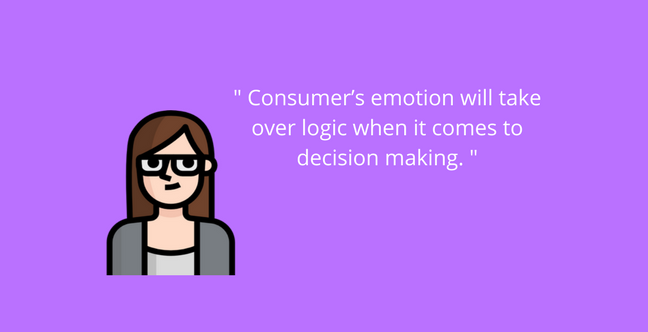
So what are you waiting for? Start to evoke their emotion now!
My favourite feeling is frisson. A sudden rush of excitement, which also comes with a sense of recognition. How many times have you thought or heard, “I don’t know what I want, but I’ll know when I see it?” That.
By using evoking pain using storytelling, by having a unique perspective on that struggle through your thought leadership, and by providing a solution that is genuinely helpful, nurturing and altruistic, you become the modern equivalent of a spirit guide. The only difference is the language you use.

Which shoe looks more premium to you?
Contrasts that create surprise. These juxtapositions are the essence of a joke. It leads you down a path of expectation and flips it at the end. More on that here.
Be surprising, and you can shake people out of apathy and get them paying attention. There’s nothing worse than having your expectations fulfilled with no imagination.
There’s a totally fake quote out there, that Henry Ford said if he’d have given people what they WANTED, he’d have given them faster horses. That still exists because it’s such a wonderful image for us. But you really can’t ask them what they want and give it to them. There has to be more.
Instead, Ford invented the car. That’s the level of “wow” you should aspire to when revealing the twist in your tale. Your solution should be so beyond the initial crisis that it solves problems people didn’t even know they had. Like how buying a GoPro makes you an elite adventurer by selling you a lifestyle.
Surprise, recognition, frisson.

Testimonials, comments and reviews matters!
Reality TV isn’t reality. Documentaries are edited for story. But we LOVE them, and we love them because we get to believe they’re real. As the X-Files told us, we want to believe.
The case study, and even better, the testimonial, are the ‘documentary’ of content marketing. They can be more powerful and more compelling than more general content because they’re written about or by people who already fit the consumer profile for the product.
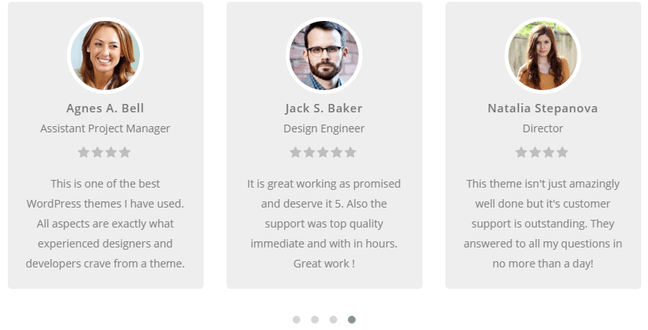
What your client would talk about you?
What’s more, they storify their struggles and your solutions, making your arguments for you.
The authenticity is immediate and undeniable. Third parties have no reason to shill your product, so they must be responding out of genuine gratitude with a genuine recommendation.
But how do you get the most from them?
Then you can use pull-quotes, like movie posters, from the people who submit feedback.
If you need more control than that, or you work with larger clients who don’t have time to rub your belly in public, you can use case studies of your work on behalf of clients, storifying the process and inputting the hard facts into a classic structure will help you spin thrilling tales of your derring do to your audiences, without it ever feeling like you’re just showing off.
These forms of storytelling can vastly increase the confidence of a prospect on your product or service. After all, people sell to people is the oldest maxim in the marketing handbook.
Remember, the call to action needs to fit the tone of the piece. You can’t write a beautiful and affecting and genuinely helpful piece of content then put a flashing BuyNow.Gif at the end. It won’t work and it’ll sour the whole experience.
Be helpful, be valuable. Be expert. You will gain trust and respect, which will make converting to sales gentler and easier.
And remember, this is a process. You need to constantly evaluate your content, using A/B testing, Google Analytics and other tools to track how successful your different ideas and approaches are, and make improvements based on data. All of this is just advice, and you still have to find the right way to execute it. I wish you luck.
Had a success story? Put in our comments section below!
Updated: 23 December 2025


Save thousands of dollars (it’s 100x cheaper)

Zero risk of Google penalty (it’s Google-approved)

Boost your rankings (proven by case studies)
Rank High With This Link Strategy
Precise, Simplified, Fast Internal Linking.
